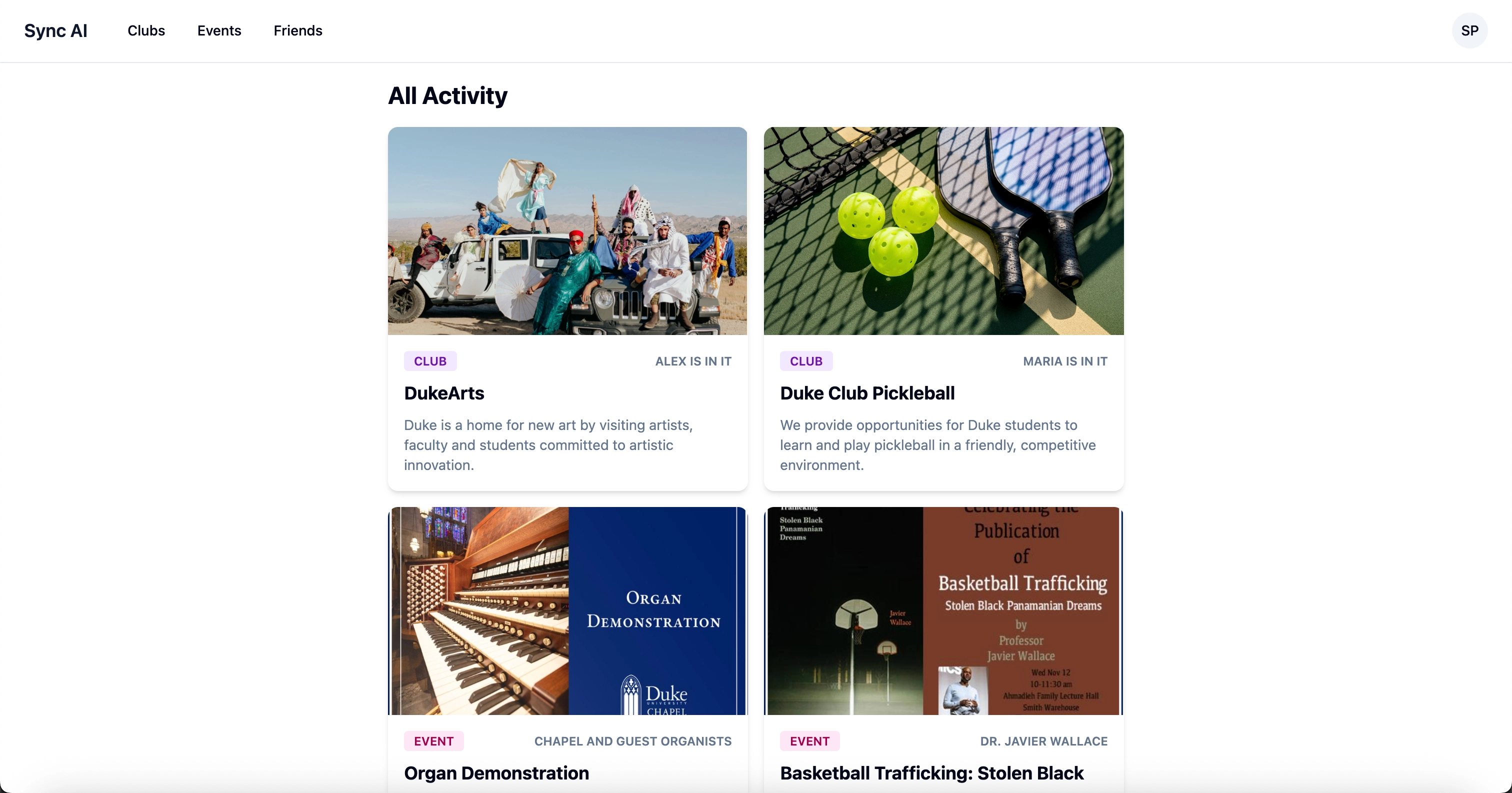
We Built a Solution to Gen Z's Loneliness Crisis at a Hackathon
After WWII, scientists asked civilians who knew genocide was happening in their own backyard: why did you do nothing?
The answer: they were able to distance themselves. When they thought of the enemy as less than human, murder became acceptable. Connection is what makes us see each other as human. Isolation is what enables us to look away.
Two-thirds of college students report feeling lonely. Students who feel lonely are 4x more likely to experience severe psychological distress.
I spent months watching my peers scroll through 600+ clubs on DukeGroups, overwhelmed and paralyzed by choice, only to give up and retreat into isolation. When I started telling people what I wanted to build, every conversation wasn’t polite interest. It was “I actually would use this. I really hope you’re successful.”
So at the Duke AI Hackathon this year, my team and I built what should have existed all along: Sync AI, a complete rethinking of how students discover and connect with campus communities.
The problem isn’t Duke. The problem is what the entire industry has given universities to work with.
Platforms like CampusGroups and OrgSync dump massive, unintuitive lists at students and expect them to figure it out. There’s no personalization or guidance. For introverts, international students, or anyone who doesn’t immediately know where they fit, it’s paralyzing. The most extroverted and well-connected thrive. Everyone else feels the immense pressure to find their place in the first week, and when they can’t navigate the chaos, they disappear.
Here’s what we actually built:
You answer 5 questions. The system gives you initial recommendations. Then it learns. Every interaction makes it smarter about what you actually care about. Instead of fighting through a list of 600 clubs, you scroll through a clean, modern feed that feels like it was built in 2025, not 2015. Fast. Intuitive. No clutter.
But here’s the part I’m most proud of: we built a friends system where you can only connect if you meet people in real life. When you’re both at the same event, the app knows. You approve each other, and then you can see what you have in common and what else you might want to attend together. Because if you met someone at the hiking club and realized they’re also in the photography club, you should know. Maybe you’ll go together instead of going alone.
We built this for enterprise use on day one with full SAML 2.0 and Shibboleth support. We’re also FERPA compliant and web accessibility compliant. Universities need those three things, and most student-built apps ignore them. We made it hard to reject for the standard policy reasons. And we designed it so universities can brand it as their own, solving the trust problem and the cold start problem in one move.
The models are interpretable. You can see why we recommended what we recommended.
This isn’t a black box neural network optimizing for engagement. We used GloVe embeddings and Bayesian updating because we can explain every recommendation to students and administrators. Ethics and transparency aren’t add-ons. They’re the foundation for this application. That’s what separates this from something someone could build in a day.
This is Gen Z’s loneliness epidemic happening in real time on our campuses.
The inability to connect drives people to isolation, depression, and worse. Universities are struggling with student retention and engagement that never fully recovered after COVID. Club leaders are fragmenting across Discord, GroupMe, and Instagram because the official platforms give them no visibility. And students are sitting in their dorms scrolling through clubs they’ll never join, feeling more alone than ever.
I led this project because I’ve lived this problem. I’ve done the market research. I’ve had the conversations. And I know that if something better existed, universities would have adopted it already. The gap in the market isn’t technology or resources. It’s that every platform sacrifices genuine connection for growth metrics. We built one that doesn’t.